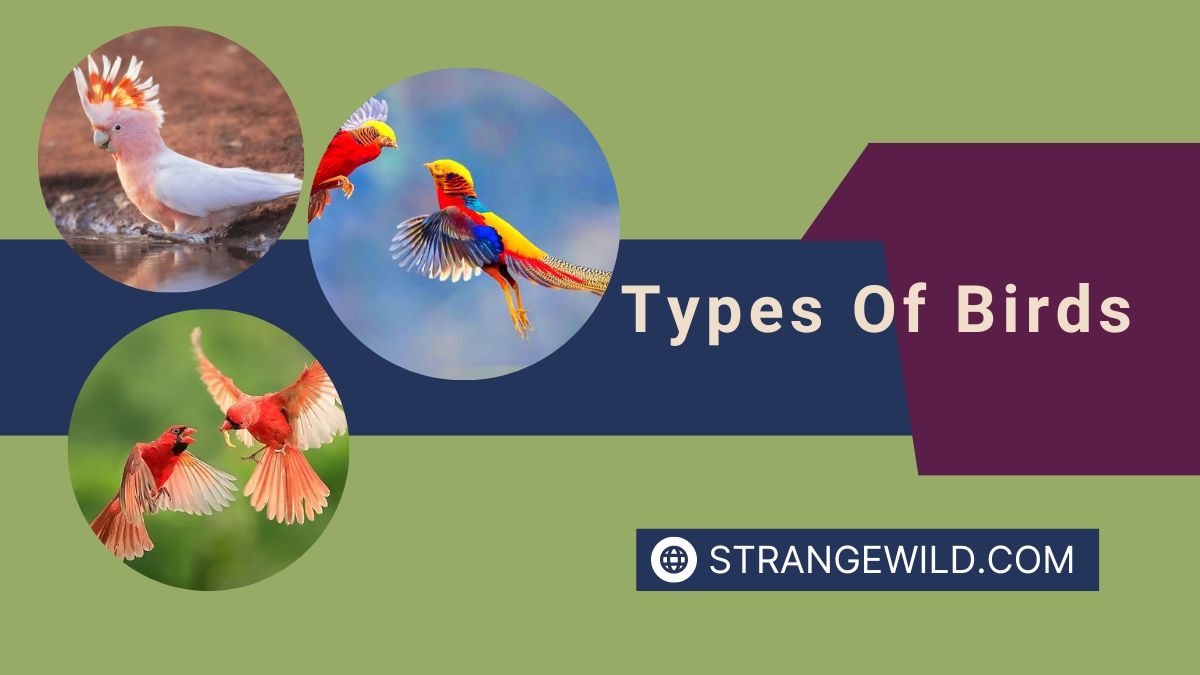Types Of Birds – Top 6 Birds
Types Of Birds? There are more than 10,000 different species of birds on the planet, and they are all unique from one another. Although there are several taxonomic families of birds, we can generalize about birds into a few key groups to keep things straightforward. The six most common bird species that you might see are listed here. Songbirds, woodpeckers, hummingbirds, birds of prey, ducks, and flightless birds are some of these species.
In this post, we’ll discuss how these many bird species differ from one another due to certain traits and features. Birds are undoubtedly one of the most popular species of animal, and in most situations, you may start a pastime of bird watching without ever leaving your house. Pet bird species
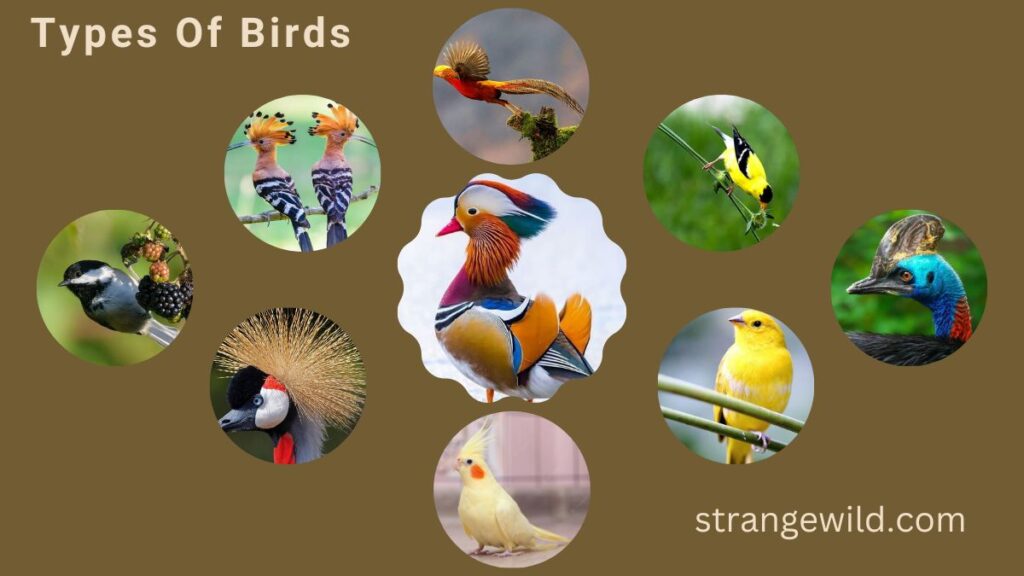
The six Types Of Birds and what makes each one unique
1. Songbirds: Types Of Birds
With more than 6,500 different species now recognized by science, songbirds are one of the most diverse groups of birds in the world. The most varied group of terrestrial or land-dwelling vertebrates is regarded to be songbirds. Every continent but Antarctica is home to them.
Songbirds are highly renowned for their frequently melodious vocalizations, as implied by their name. They can masterfully regulate the syrinx, a vocal muscle located in their tracheas, which contributes to this in part.
It is largely the males who sing, and the purpose of their vocalizations is to claim the territory and attract mates. The songbirds are often smaller than some of their other avian relatives. The Short-tailed Pygmy-Tyrant, the smallest species of songbird, stands about 2.6 inches tall and weighs just 0.15 ounces.
Songbirds have unique feet with four toes that extend backward from the heel of their foot, in addition to three narrow toes that point forward. This enables them to quickly and easily grasp thin branches or other surfaces. Breeding parakeets
Here are a few songbirds that you might be familiar with:
American Robin
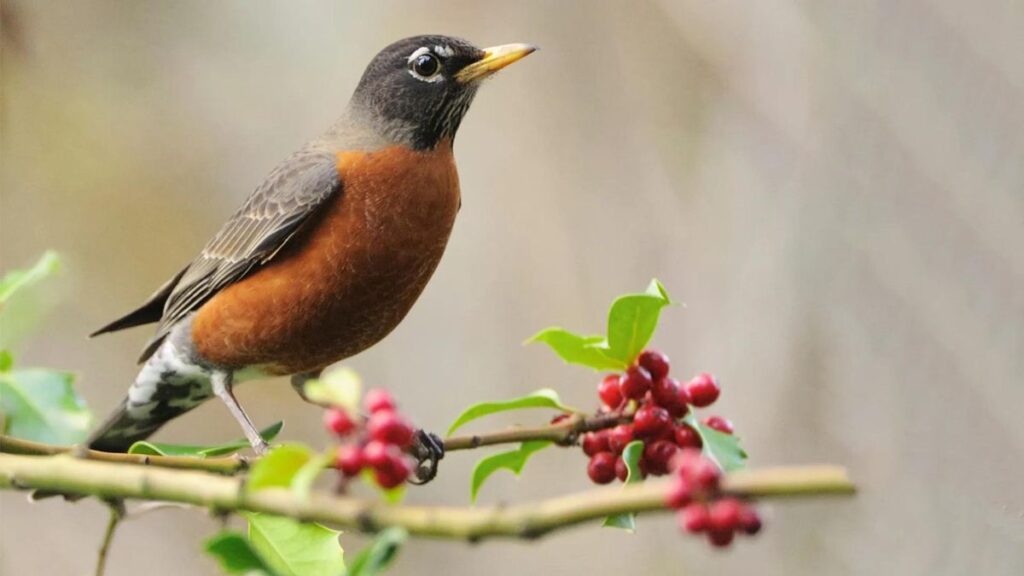
Scientific name: Turdus migratorius
Species: Songbird
The huge songbird known as the Robin may be found all throughout the North American continent and is distinguished by its vivid orange belly. These birds are quite migratory, thus they cannot be found year-round in every region of North America.
Chickadee
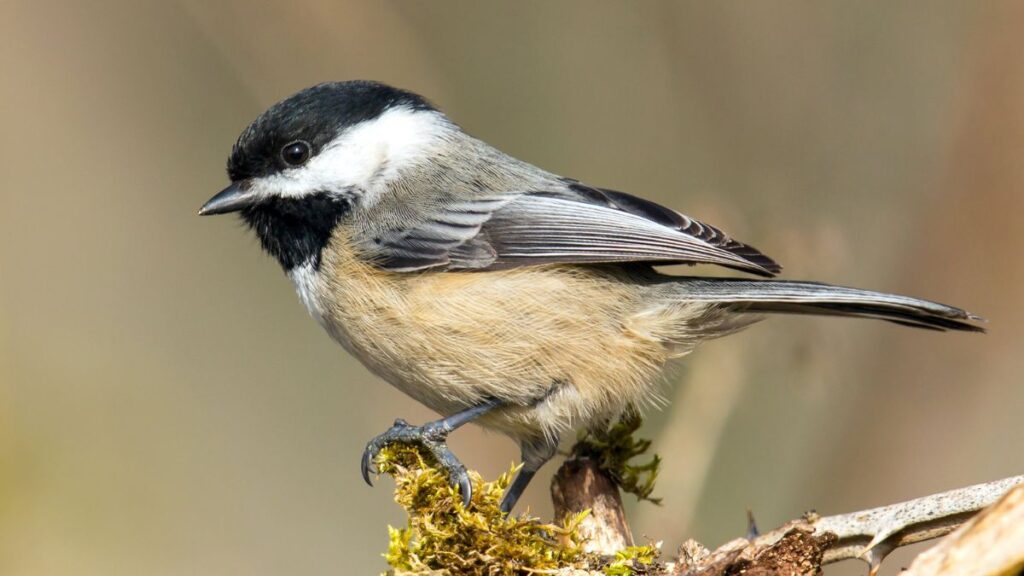
Scientific name: Poecile spp
Species: Songbird
The common term “Chickadee” refers to a number of different species, all of which may be quickly distinguished by their sing-songy vocalizations. They are little songbirds that range in size from 2.5 to 5.5 inches. Despite their diminutive size and fairly dull coloring, they are the official bird of Massachusetts and Maine.
American Goldfinch: Types Of Birds
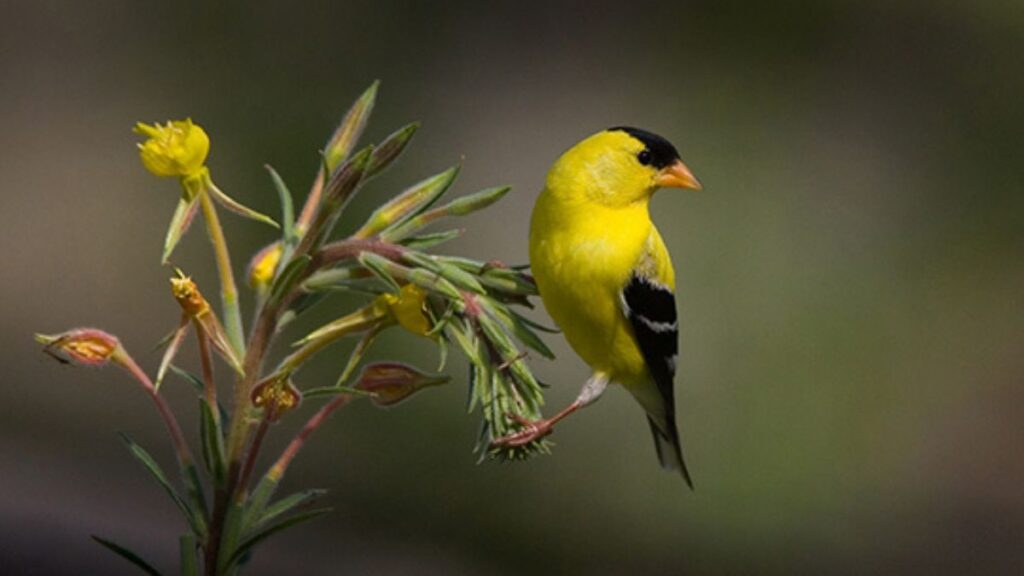
Scientific name: Spinus tristis
Species: Songbird
The American goldfinch is a beautiful species of songbird that is indigenous to North America and a popular visitor at bird feeders. But only the male has bright yellow feathers, while the females usually have pale brown feathers.
Blue Jay
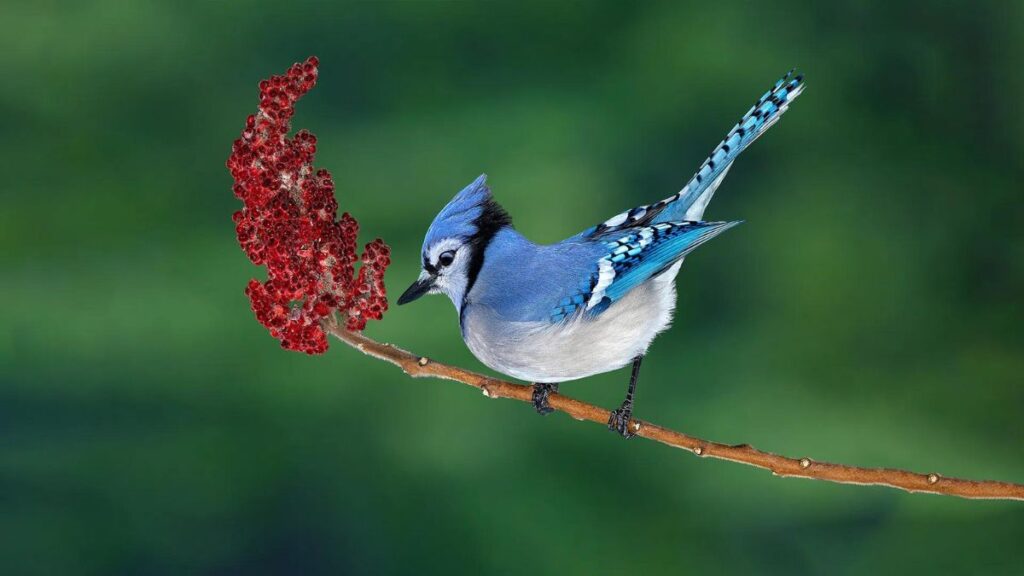
Scientific name: Cyanocitta cristata
Species: Songbird
Blue jays, so named because of their baby-blue feathers, are widespread songbirds in the eastern United States and southeast Canada. Unlike many other species, owls have colorful feathers on both males and females. Even though they are generally not violent toward people or other animals, blue jays are known to be quite aggressive with other species of birds. Also have a history of beheading unlucky birds.
2. Woodpeckers: Types Of Birds
The amazing group of birds known as woodpeckers has anatomical modifications that enable them to chisel through the bark of trees. They hunt for insects and larvae by beating their large, powerful beaks against tree trunks. Often, you’ll hear a woodpecker before you see it because of how loudly and rhythmically its beaks beat against the wood.
While most animals would probably get themselves a concussion by banging their heads against anything hard. These birds have a unique tongue bone that wraps around their head completely and serves as a cushion to safeguard their brain.
In addition, woodpeckers have long, sticky tongues that they use to pluck insects out of the holes that their beaks have drilled. Although they can be only a few inches tall, woodpeckers are often larger than other birds. Species can differ in terms of hue and pattern. They frequently have feathers that are brown, white, and black with a colorful feather crown on top of their heads. What can parakeets eat
These are a few illustrations of woodpeckers:
Pileated Woodpecker
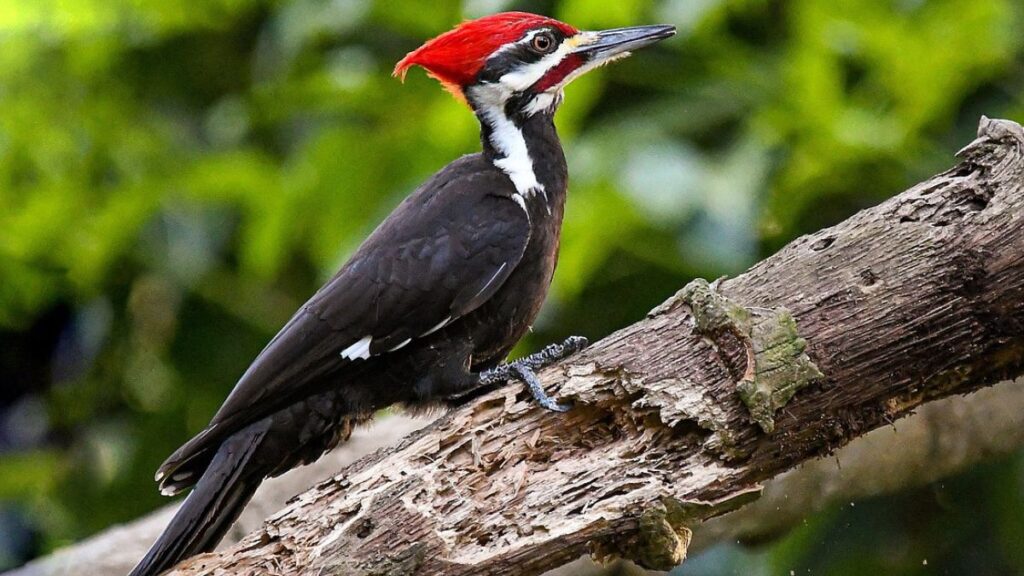
Scientific name: Dryocopus pileatus
Species: Woodpecker
A stunning species of woodpecker, the Pileated woodpecker is distinguished by its red crown and white and black facial markings. They are a somewhat large species, measuring between 19 and 19 inches. The eastern part of the US, a large portion of Canada, and the US west coast are all home to this species.
Downy Woodpecker
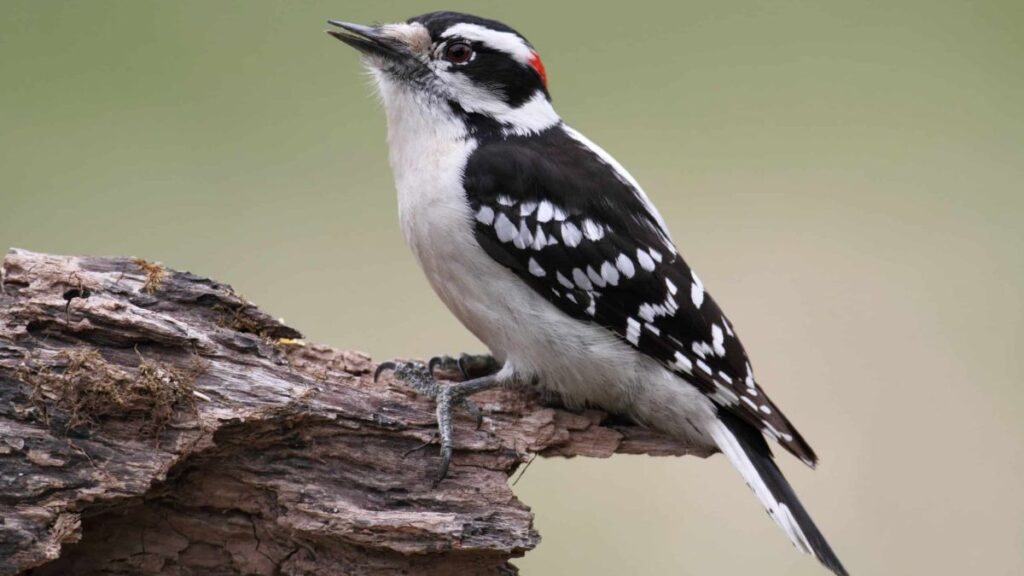
Scientific name: Dryobates pubescens
Species: Woodpecker
The smallest species of woodpecker in North America, the downy, only reaches a maximum length of 7 inches. Except for the Southwest and much of Canada, they are present practically everywhere in the United States. The males have a little tuft of red feathers on their heads, and they are black and white.
Hairy Woodpecker: Types Of Birds
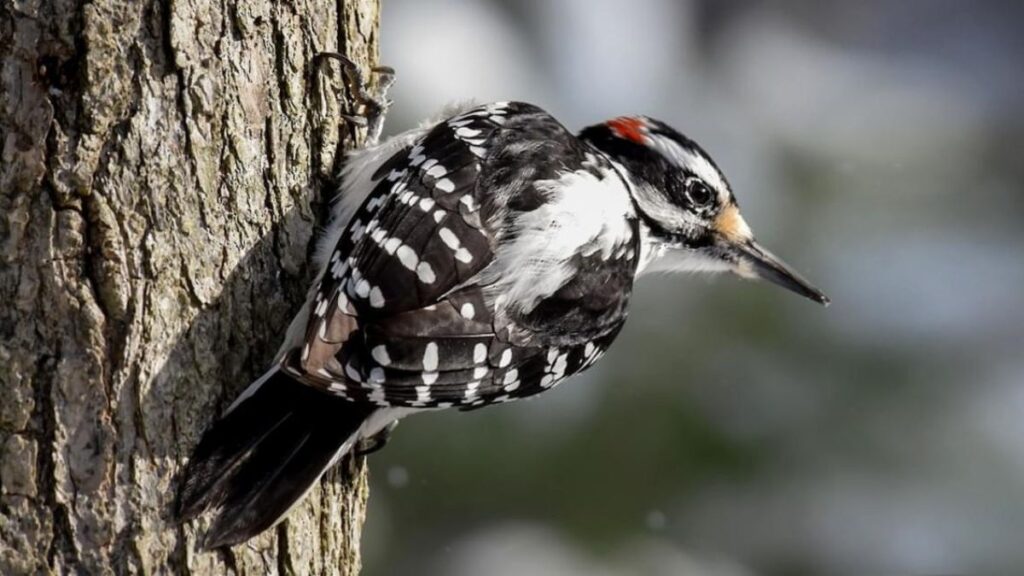
Scientific name: Leuconotopicus villosus
Species: Woodpecker
A frequent and extensive species, hairy woodpeckers can be found across most of the United States, Southern Canada, and parts of Mexico. They resemble the Downy woodpecker in terms of looks, but the Hairy woodpecker is much larger and can grow to reach 7 to 10 inches long.
3. Hummingbirds: Types Of Birds
Around 350 different species of hummingbirds make up the distinctive group of birds known as hummingbirds. As they only exist in North and South America, where they can be found as far north as Alaska, all of these species are regarded as “new world” species. However, the majority of species are located in the tropics and warmer climates.
The ability of hummingbirds to flap their wings at amazing speeds—up to 90 beats per minute, to be exact—may be their most well-known characteristic. You have probably seen this behavior if you have ever seen a hummingbird. You’ve probably also noticed that while they’re hovering or flying, their wings flap so quickly that you can’t even see them.
It makes sense that they would have a rapid heartbeat given how quickly they flap their wings. Their metabolism is quite vigorous, and their heart can beat as swiftly as 1,260 times per minute. They require frequent and large meals since they have the fastest metabolism of any animal.
As pollinators, hummingbirds consume the nectar of flowering plants. This is made possible by their long, narrow, curved beak, one of a hummingbird’s distinguishing features.
These three hummingbird species are found in North America:
Ruby-Throated Hummingbird
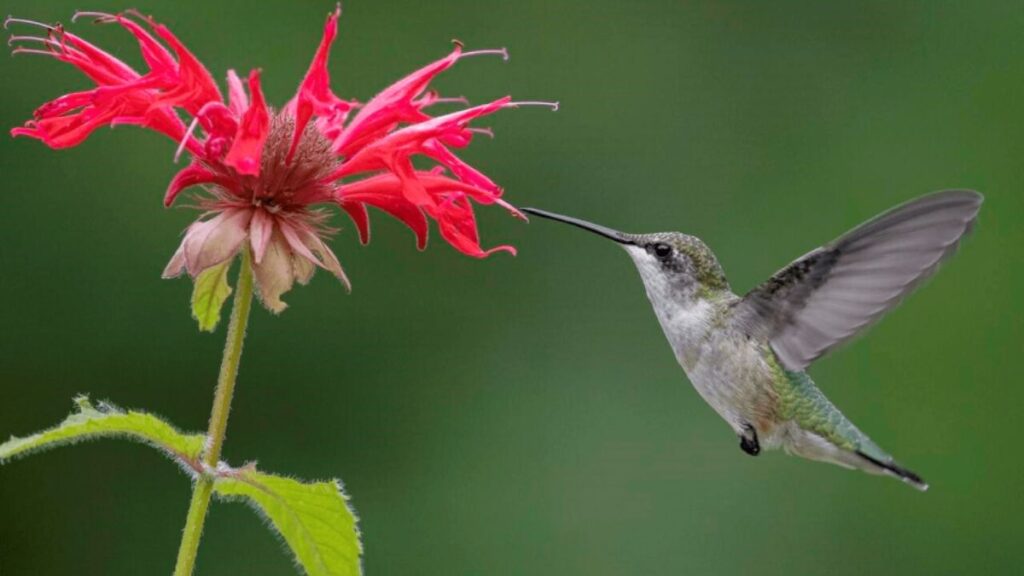
Scientific name: Archilochus colubris
Species: Hummingbird
In the United States, ruby-throated hummingbirds are a frequently seen species. However, due to their extensive migratory patterns, these little birds spend their spring and summer in Canada and the northeastern United States. They can be seen in southern states and Mexico in the winter.
Hummingbird Bumblebee
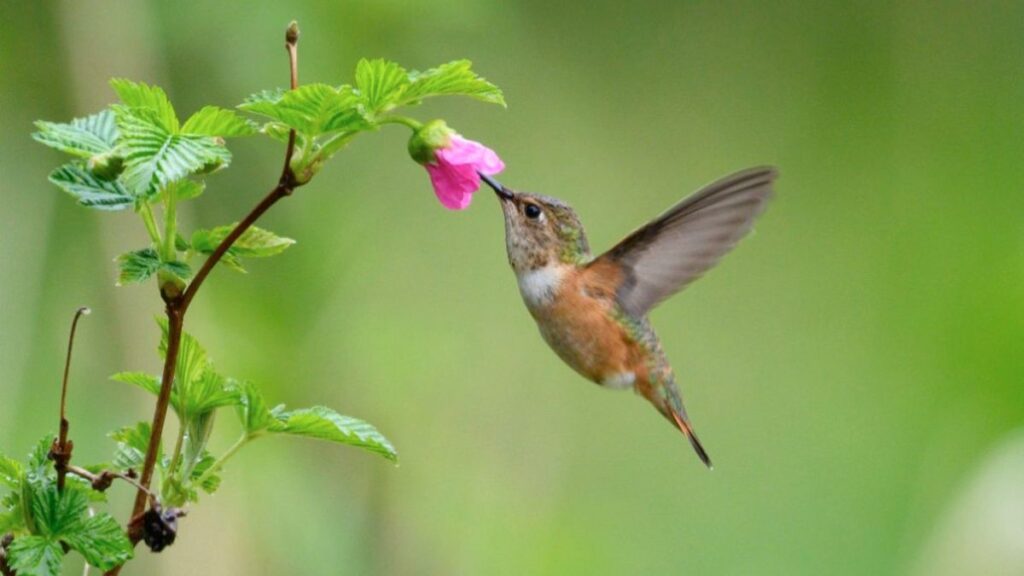
Scientific name: Selasphorus heloisa
Species: Hummingbird
The Bumblebee hummingbird, arguably one of the cutest birds on this list, is regarded as one of the tiniest birds in the entire world. Just 3 inches and 2.2 grams in length! Despite being native to Mexico, some have been seen in the southern United States.
Anna’s Hummingbird: Types Of Birds
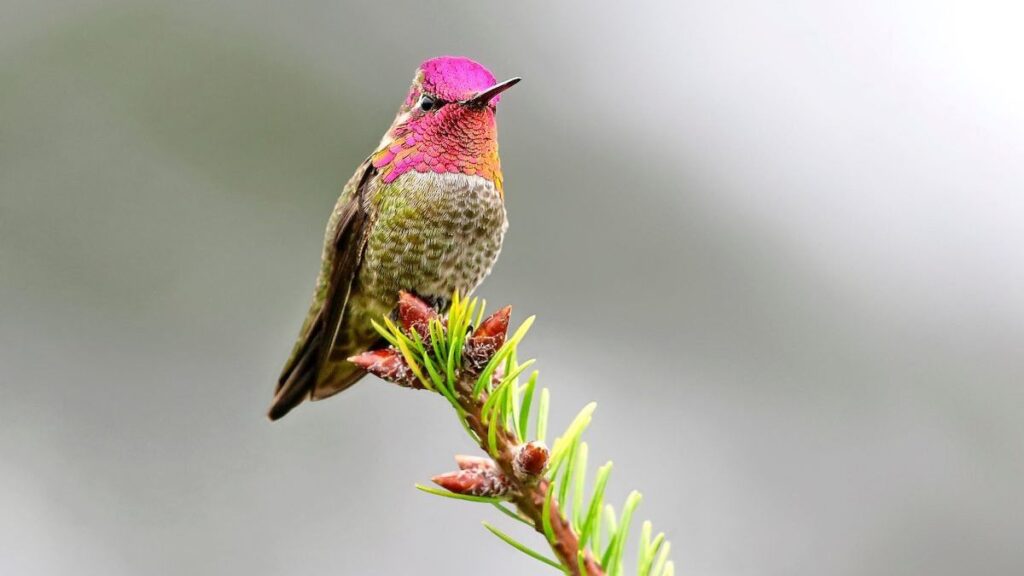
Scientific name: Calypte anna
Species: Hummingbird
The west coasts of the United States and Canada are home to this species. They can be recognized by their dark green wings and pink or Fuschia-colored crowns, while the males tend to display these colors more prominently. These hummingbirds consume nectar and incredibly tiny insects.
4. Predator Bird: Types Of Birds
Birds of prey are the exception to the rule, as they are known for being ferocious hunters. They are noted for possessing extraordinary vision, which they employ when hunting. These birds mostly hunt vertebrates, though some may consume carrion or the remains of deceased animals.
Predator birds usually referred to as raptors, frequently have enormous talons that they utilize to seize fumbling prey. They can easily slice and tear apart food thanks to the size, breadth, and sharpness of their beaks.
Raptors often have large, wingspans covered in feathers that are black, brown, white, grey, or auburn in color rather than bright or brilliant plumage. Predator birds can grow up to four feet tall, making them frequently larger than other bird species. However, certain species, like the American Kestrel, can reach heights of 8 to 12 inches.
The following raptors are probably instances you’ve heard of:
Bald Eagle
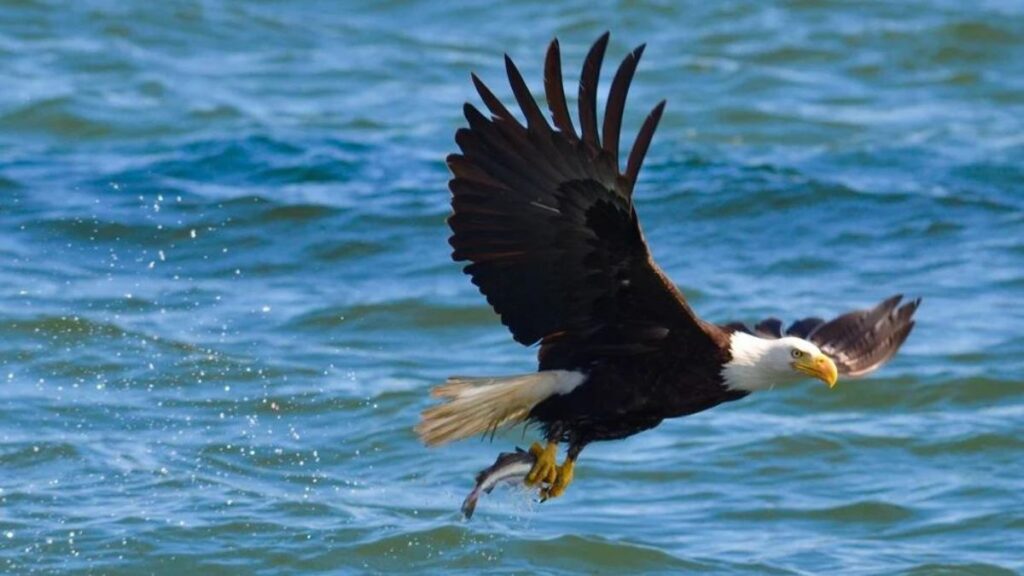
Scientific name: Haliaeetus leucocephalus
Species: Predator Bird
In the United States, the Bald Eagle is well regarded as the national bird. These birds can be recognized by their dazzling white head feathers, brown bodies, and bright yellow beaks. For a raptor, bald eagles have a rather varied diet that includes fish, small animals, and other birds.
Condor Of California
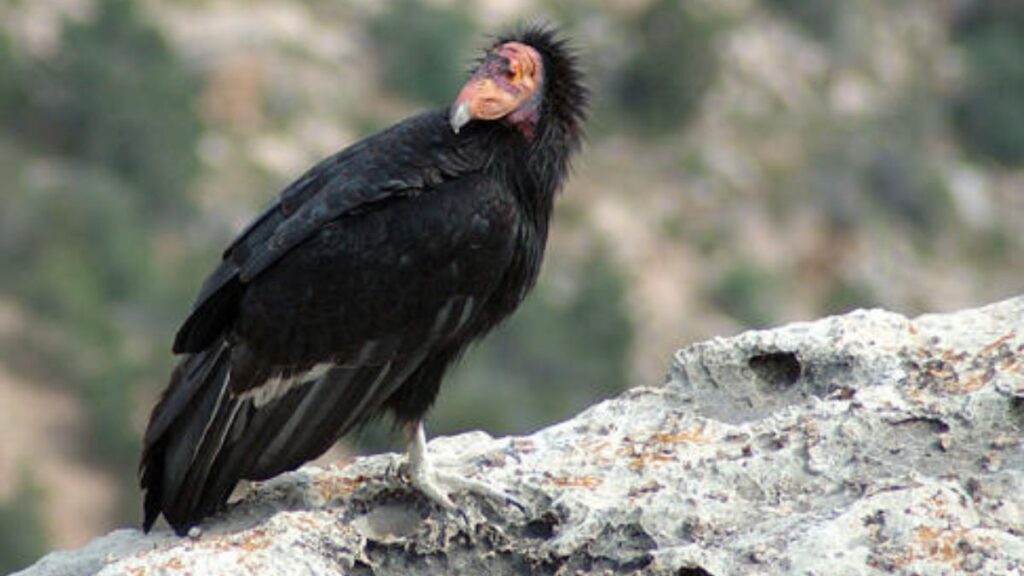
Scientific name: Gymnogyps californianus
Species: Predator Bird
The California condor may grow its wingspan to almost 10 feet broad, making it the animal in North America with the longest wingspan. These enormous birds, which are actually vultures, eat mostly carrion or dead animals for food. Although their population is progressively growing, this species is sadly extremely threatened.
Golden Eagle: Types Of Birds
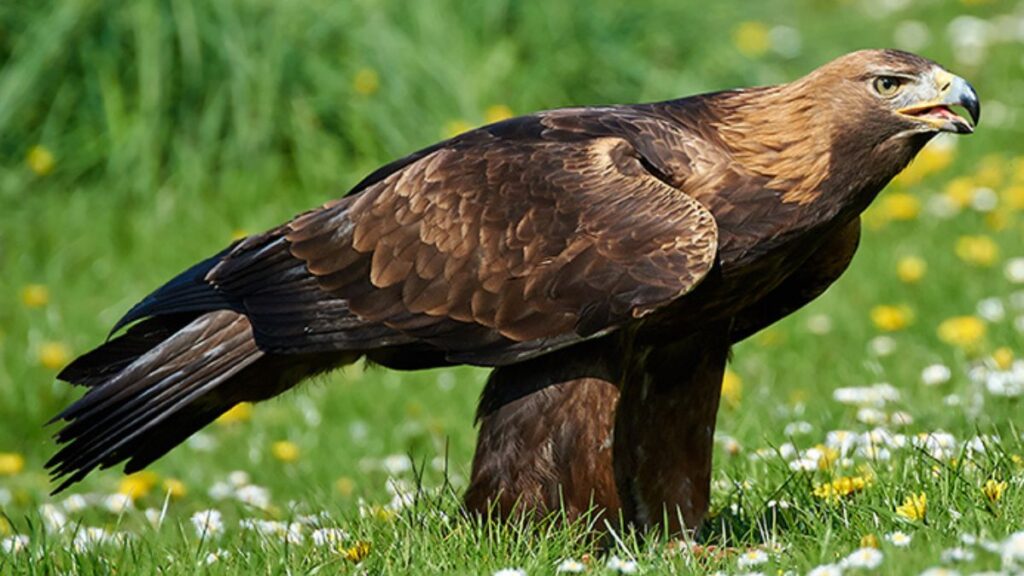
Scientific name: Aquila chrysaetos
Species: Predator Bird
The Golden eagle is the only other eagle species that are indigenous to North America outside the Bald eagle. However, Africa and Eurasia are also home to these raptors. They may give birth to up to two eaglets, or baby eagles, each year and are believed to mate for life.
Peregrine Falcon
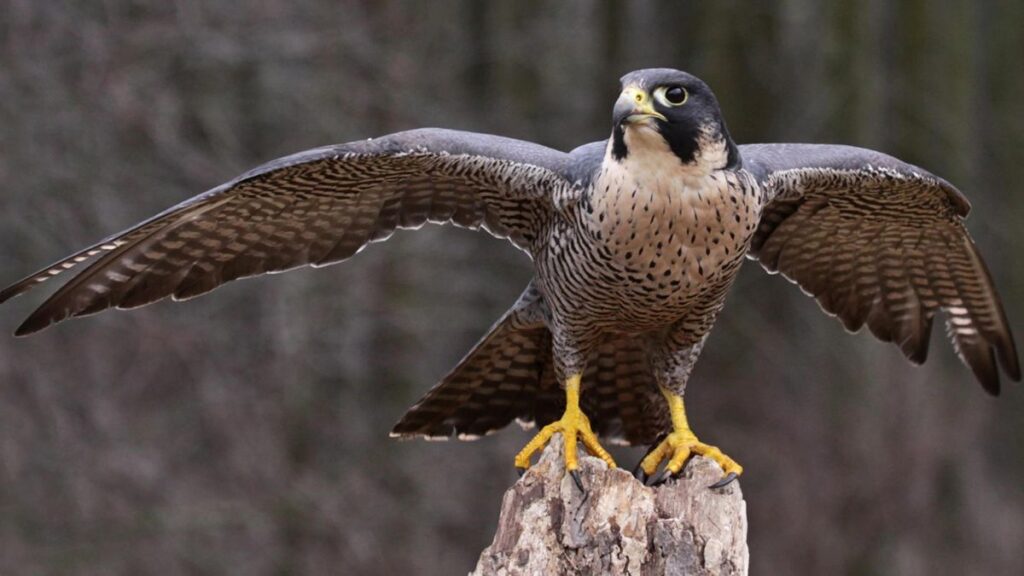
Scientific name: Falco peregrinus
Species: Predator Bird
There are several well-known peregrine falcons. Because they are very migratory, these raptors can actually be found on every continent, with the exception of Antarctica, depending on the season. The capacity of these birds to fly at tremendous speeds is perhaps their most outstanding characteristic. They can fly up to more than 200 miles per hour, making them the world’s fastest birds.
Vultures (New World)
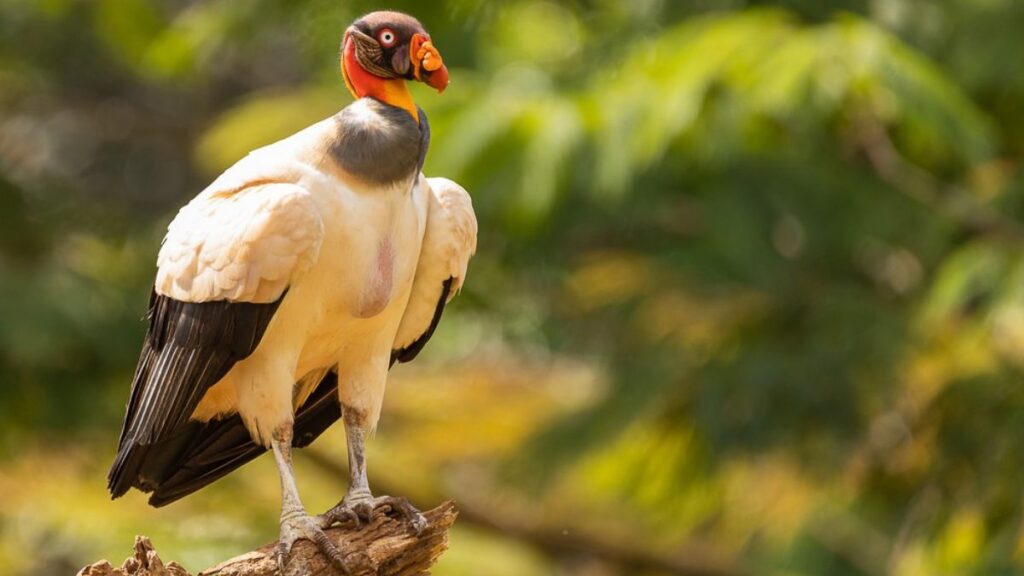
Scientific name: Sarcoramphus papa
Species: Predator Bird
The two species of the condor and other vultures found in the Americas, such as the king vulture (Sarcoramphus papa) and the turkey vulture, are all members of the New World vulture family (Cathartes aura). As scavengers, they primarily consume carrion.
Vultures from the New World are not closely related to those from the Old World. Although the groups come from different lineages, they share many traits and occupy the same niche. Convergent evolution can be seen in this situation. Many vultures in the New World have a keen sense of smell, unlike their counterparts in the Old World.
The birds use this together with their keen vision to find food. North America’s largest land bird is the California condor. It was reintroduced after going extinct in the wild in the 1980s. The species is still gravely threatened.
Vultures (Old World)
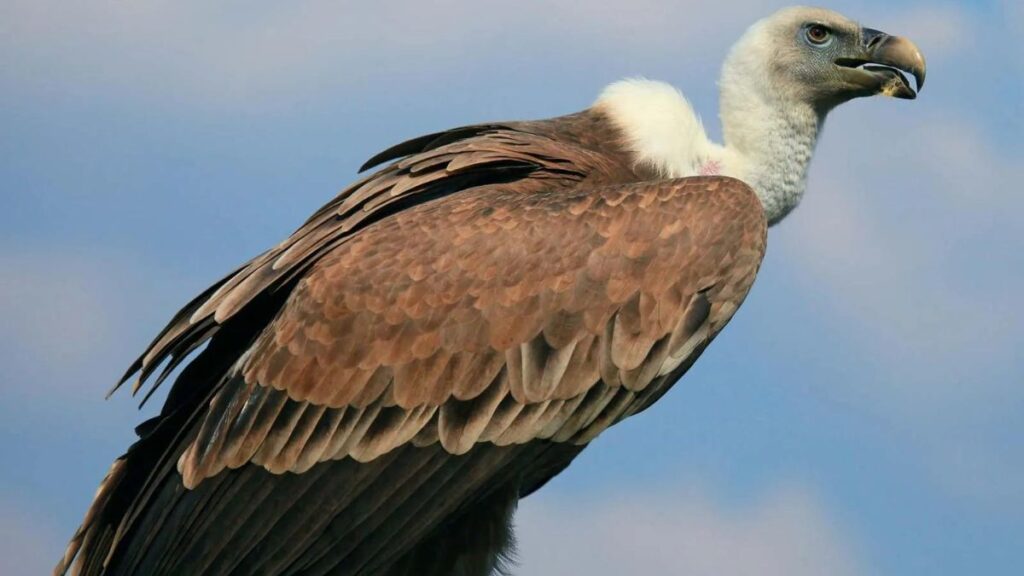
Scientific name: Sarcoramphus
Species: Predator Bird
Old World vultures are scavengers who eat mostly dead animals. They use sight to find food (they lack the powerful sense of smell of some New World vultures). Some vultures from the Old World, like the African lapwing-faced vulture, also catch their own prey.
The Old World vulture family has 16 species, with more than half of them being classified as vulnerable, endangered, or severely endangered.
5. Waterfowl: Types Of Birds
These birds are ideally suited for a semi-aquatic lifestyle, therefore their appropriate name. They have feathers that are so oily that they practically serve as a barrier to keep water from soaking them. This can keep their feathers feeling light and prepared for flight while also keeping them warm in chilly climates.
Webbed feet are arguably the most glaring and distinguishing feature of waterfowl. Each toe has thick skin in between them that functions almost like a paddle for their feet, enabling them to swim effortlessly. Additionally, waterfowl have generally flat bills with comb-like ridges on the edge instead of standard beaks.
This modification makes it possible for them to filter out food, which is primarily aquatic vegetation, from the water by allowing them to strain it out. The plumage of this group of birds varies quite a little. Some species exhibit sexual dimorphism, with the males having more vivid, brightly colored feathers, while the females have duller, more subdued hues.
The following ducks and geese are included in the category of waterfowl:
Mallard Duck
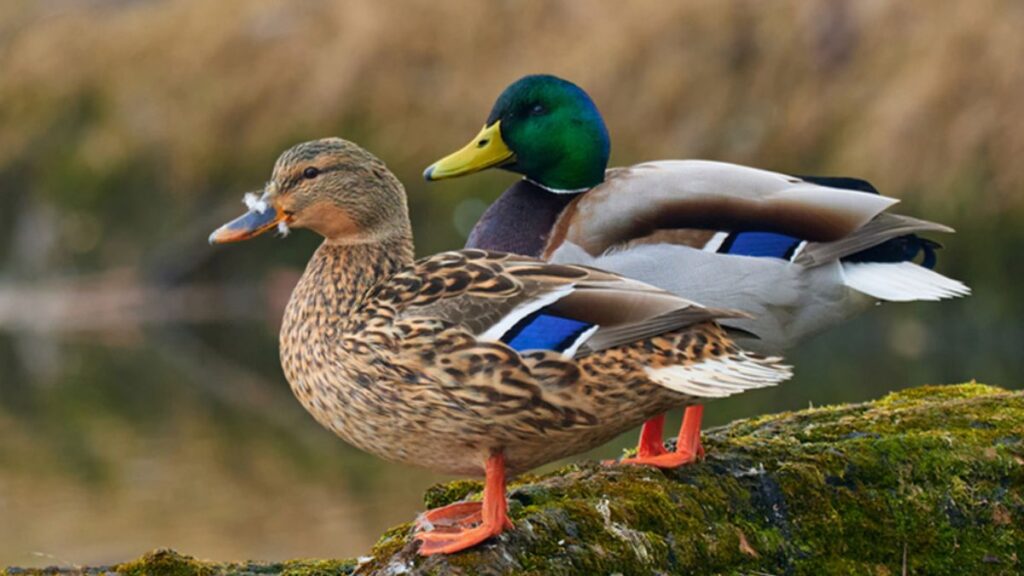
Scientific name: Anas platyrhynchos
Species: Waterfowl
You have probably seen a Mallard duck if you have ever been to a pond or other freshwater area in the United States. Native to the Americas, Africa, and Eurasia are these ducks. The ladies have a basic brown color, but the males are well renowned for their green and purple plumage.
Snow Goose: Types Of Birds
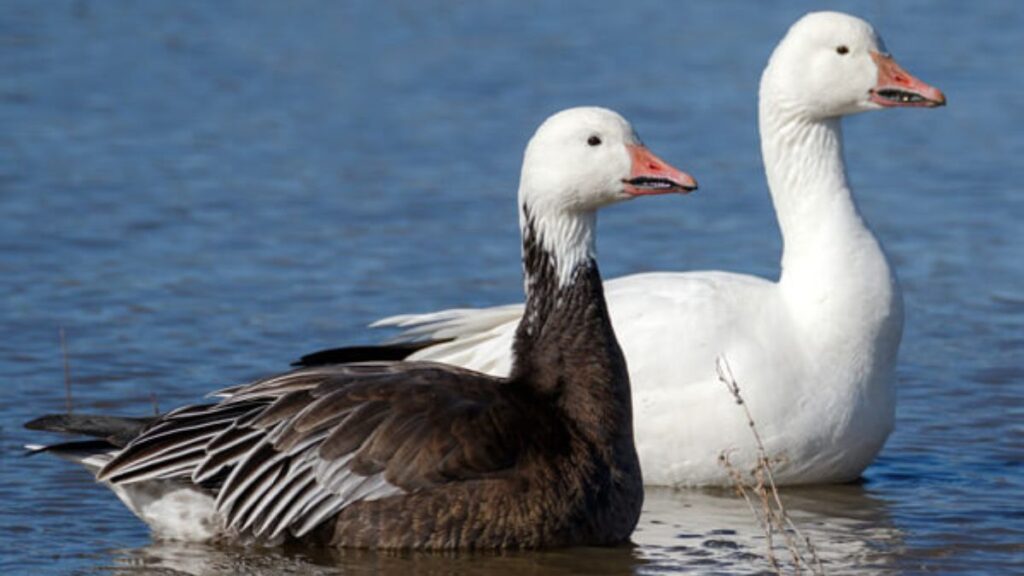
Scientific name: Anser caerulescens
Species: Waterfowl
A species of duck that is indigenous to North America is the snow goose. This species, unsurprisingly, thrives in frigid climates. They migrate south to spend the winter after spending the breeding season in northern Canada and Alaska. These geese establish enduring ties with their partners.
Wood Duck
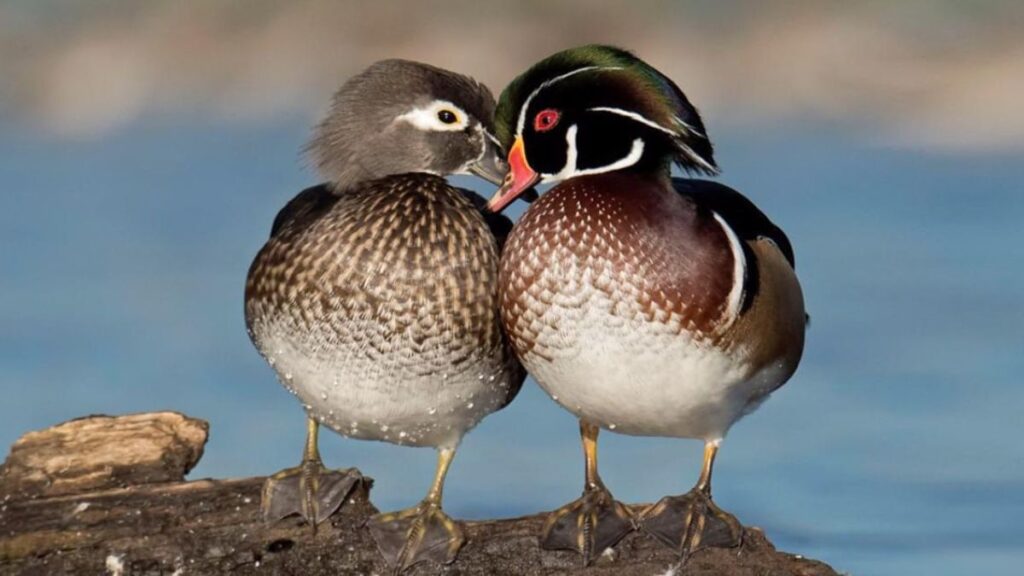
Scientific name: Aix sponsa
Species: Waterfowl
Ducks are generally not thought of as being very attractive. But the Wood duck is unquestionably an exception. This species is regarded as the North American waterfowl with the most vivid plumage. They can be found in coastal northern Mexico, the eastern United States, and the West Coast. Here are some fascinating details regarding wood ducks.
6. Flightless Birds: Types Of Birds
Although it goes without saying that birds are famous for their ability to fly, there are really about 60 kinds of birds that cannot fly. Even so, many of the species of birds that fit within this category possess characteristics that make them a particularly impressive group of birds. The majority of flightless birds are terrestrial, although some, like penguins, are semi-aquatic and spend some time on land and some in the water.
This group of birds’ inability to fly is undoubtedly its most distinguishing feature. In contrast to other bird species, these birds also frequently have exceptionally big or broad legs. This sort of makes up for the fact that they are unable to fly and must therefore conduct all of their travel on foot.
The majority of flightless birds, with the exception of penguins, have long legs that are paired with huge. Nearly spherical bodies and disproportionately short wings. In actuality, evolution has caused the wing bones of flightless birds to get smaller over time. Here are three examples of birds without wings, along with some images.
Ostrich
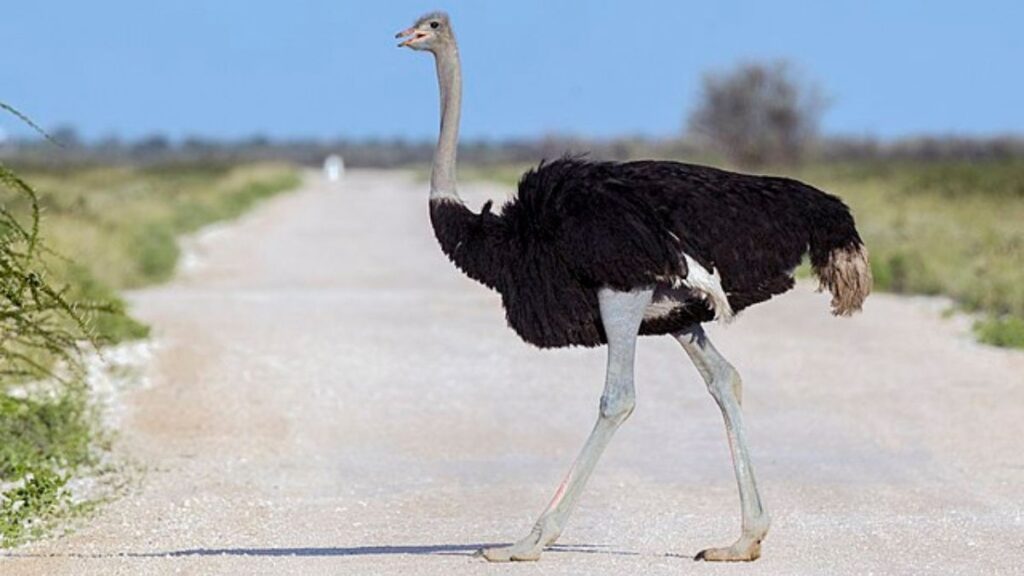
Scientific name: Struthio spp
Species: Non-flying
The first species that typically comes to mind when you consider a flightless bird is an ostrich. They are big birds that may get up to a height of over nine feet! Ostriches are the fastest terrestrial birds and may run as quickly as 43 mph. They are as tall as they are swift. They are African natives and are enormous. List of birds
Penguin Emperor: Types Of Birds

Scientific name: Aptenodytes forsteri
Species: Non-flying
The largest penguin species, the emperor penguin may reach heights of 39 inches and weights of 99 pounds! This particular kind of penguin only lives in Antarctica, where it has evolved to survive and reproduce in the freezing temperatures of -40°F!
Cassowary
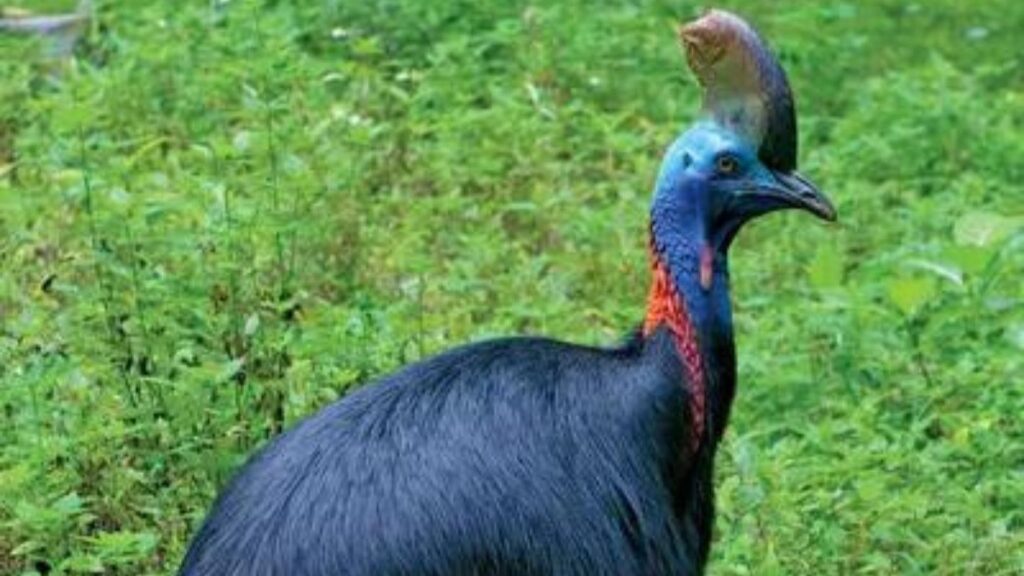
Scientific name: Casuarius spp
Species: Bird without wings
Although occasionally hazardous, cassowaries are an intriguing species of bird. On their head, they have a big casque that resembles a lone horn poking out of the skull. Cassowaries can kick other animals or even people with their powerful legs and razor-sharp nails to cause them great pain and even death. They originated in New Guinea and Australia.

